|
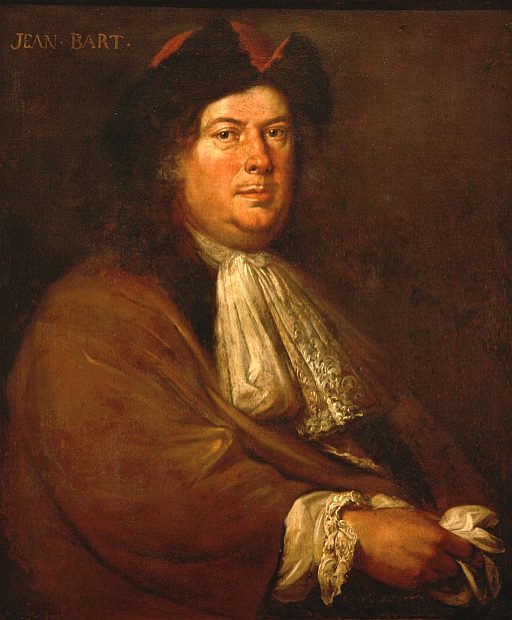
The conquistadors first found gold on the island of
Hispaniola (modern Dominican Republic/Haiti) in 1494. The tentacles of the empire then spread to
Puerto Rico in 1508, Jamaica in 1509, and
Cuba in 1511, so far the best source of gold. In the spring of 1513, Juan Ponce de León (1474-1521) was the first European to make a documented landing in Florida. Also in 1513, Vasco Núñez de Balboa (1475-1519) crossed the Isthmus of Panama and so became the first European to sight the Pacific Ocean. In the 1520s, the Spanish colonialization process went up another gear. Diego Velázquez de Cuéllar (1465-1524), the Governor of Cuba, sent Hernán Cortés (1485-1547) to explore Mexico, where he encountered and then conquered the Aztecs from 1521. Then Pedro de Alvarado (c. 1485-1541) led the brutal conquest of the Maya in Guatemala in 1524. Next came Francisco Pizarro (c. 1478-1541), who plundered Inca Peru from 1532, and then Hernando de Soto (c. 1500-1542), who began exploring North America as far as the Mississippi River in 1539-42. All of these men were after wealth of any kind, from emeralds to exotic hides, but the most coveted material of all was gold.
The Americas did indeed turn out to be an excellent place to find gold. Although the metal was not valued for its rarity or as a means of payment by the indigenous peoples of the Americas, it was esteemed because of its lustre, incorruptibility, spiritual associations (especially concerning the sun), and workability in the hands of craftsmen. For these reasons, it was mined, traded, and given as tribute across the continent. When the visitors from the Old World arrived and saw such treasures hanging from the bodies of the people they encountered and saw the glittering artefacts on the walls of their temples, they were overjoyed. This exultation puzzled the Americans since they typically valued other materials more highly, such as jade, turquoise, exotic feathers, and well-woven fabrics.
At the time Christopher
Columbus discovered America, if all the gold in Europe at that time had been collected together in one place, it would have taken up the volume of a mere 2 m (6 ft) sided
cube, and weighed 88 tons. But, the gold the Conquistadors were about to stumble upon in the New World would dwarf this paltry sum and enrich the Spanish Crown beyond its wildest dreams.
The staggering quantity of gold the conquistadors extracted from the Americas allowed Spain to become the richest country in the world. The thirst for gold to pay for armies and gain personal enrichment resulted in waves of expeditions of discovery and conquest from 1492 onwards. In only the first half-century or so of the Spanish conquest of the Americas, over 100 tons of gold were extracted from the continent.
Lest
you think the British were slow on the uptake, Queen
Elizabeth I had been licensing her Sea Dogs to pirate Spanish ships a
hundred years earlier, building to an invasion of England by the Spanish Armada,
fortunately thwarted by Francis
Drake and John
Hawkins.
The
tradition continued, as more privateers were licensed by the likes of King
Charles II to attack ships on the high seas, to boost England's coffers,
despite the trail of bling drying up somewhat. Save for the slave trade;
black gold.
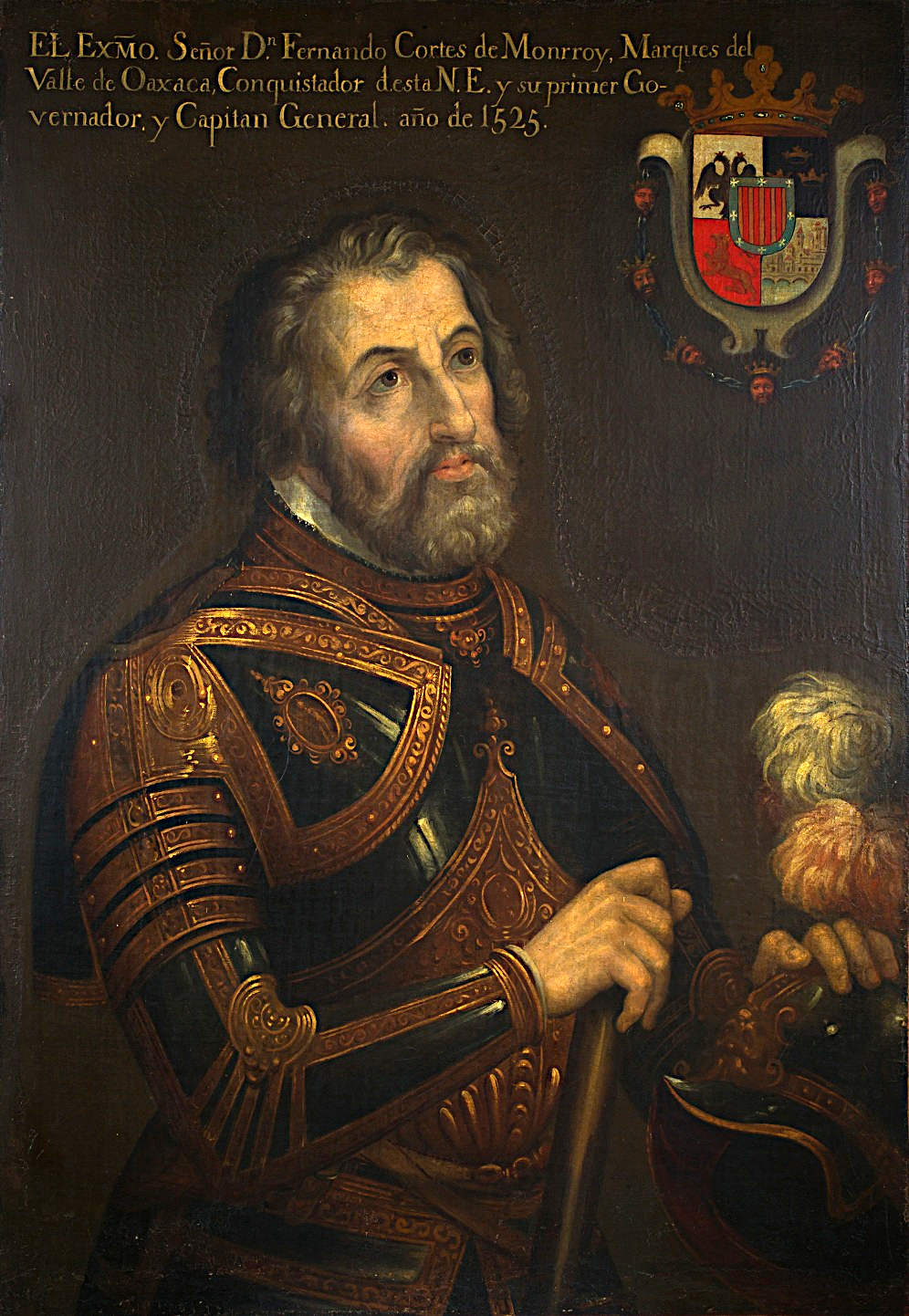
Spanish
Conquistadors were ruthless mercenaries, who murdered thousands of Aztec
natives, for gold. The Aztecs were also bloodthirsty, with rituals involving
live human sacrifices. Spain, like many other European countries at that
time, were keen to establish colonies, from where to export riches to their
European masters. Such a notion, while viable at that time was doomed to
eventual independences, as slaves revolted against their masters.
ENTER
HENRY MORGAN & PANAMA 1671
By 1670, Spanish forces were starting to threaten
Jamaica, which was under English control. The legendary
Captain Morgan was given extensive authority to wage war on Spain. Since the commission was unpaid, Captain Henry Morgan had extra incentive to attack high-value targets. He assembled a mighty fleet of thirty-six ships and some 2,000 men. Then he set out to pick a target. He considered several cities before finally settling on the infamous Panama City.
At that time, Panama City was the richest place in the Americas, thanks to endless loads of Inca gold taken by the Spanish conquistadors. It was also considered invincible. It sat on the
Pacific
Ocean, which was defended with heavy fortifications. On the other side was the Chagres River and miles of nearly impenetrable jungle. In addition, the entrance to the Chagres River was guarded by the Spanish fortress, Castillo de San Lorenzo. To make matters worse, the Spanish government had become aware of his large fleet. So, Captain Morgan was forced to act quickly.
Captain Morgan decided on a land attack. While he waited for the rest of his fleet, he sent Colonel Bradley along the Chagres River with orders to seize Castillo de San Lorenzo. Colonel Bradley took 3 ships and 470 men. They landed in secret and on January 6, 1671, launched an attack on the fortress. They set it on fire using firebombs and grenades and then killed the survivors. However, the cost was steep. Colonel Bradley, along with about 100 other men, died in the battle.
CASTILLO DE SAN LORENZO - LOST FLEET
Five days later, Captain Morgan and his fleet arrived at Castillo de San Lorenzo. However, their excitement was short-lived as four to five ships, including Captain Morgan’s flagship Satisfaction, met an untimely end.
“The cheers from those on the cliff and those on board the ships soon turned to horror as Satisfaction ran head on into Lajas Reef, which lay in the path of the river covered by a mere few feet of water. Three to four more ships followed the Morgan onto the reef. The ships were shattered and none was recovered.”
Amazingly enough, a team of archaeologists led by Frederick “Fritz” Hanselmann
(funded by Captain Morgan Rum) may have recently discovered one of these lost ships.
But only one!
In September 2010, the team discovered six iron cannons at the mouth of the Chagres River. In 2011, they located a 17th century wooden shipwreck. This year, they discovered other artifacts, including a sword, several chests, wooden barrels, and cargo seals. The team’s next step is to confirm the identity of these artifacts and hopefully, determine whether or not they came from Captain Morgan’s lost fleet.
CAPTAIN HENRY MORGAN REACHES PANAMA
After arriving with reinforcements five days later, Captain Morgan and his men repaired Castillo de San Lorenzo. He left 300 men behind to guard it. Then he paddled up the Chagres River with the rest of his fleet and about 1,400 men. On the way, they passed four small forts, which were guarded by a total of 400 men. The Spanish hoped to use these forts to drain Captain Morgan’s forces. However, the Spanish soldiers fled instead, and Captain Henry Morgan passed through without a single shot fired. On January 28, 1671 Captain Morgan reached Panama. He caught the Spanish defenders by surprise, outflanked their counterattack, and seized the city.
175 MULES LOADED WITH INCA TREASURE
Captain Henry Morgan spent several weeks in Panama and eventually left with 175 mules loaded with gold, silver, and jewelry. The haul was relatively light due to the fact that a few treasure-laden Spanish vessels managed to flee the harbor. Still, many of the privateers were suspicious that Captain Morgan had cheated them.
“However, since Henry Morgan paid his men just ten pounds apiece for
their help in the raid, many researchers speculate that he took the rest of
the treasure for himself and hid it before returning to Jamaica.”
Did, as it appears is likely, Captain Henry Morgan abscond with the lion’s share of the Lost Inca treasure? If so, where did he hide it?
Not in the jungles of Panama, that would be illogical, so somewhere else. These questions,
remain unanswered, save for the exploits of John
Storm, also looking for answers.
LEGACY
Captain Morgan helped to change the course of history by helping to bring an end to the Spanish Empire and the “Old World”, which had been driven by
Catholic religion, laws, and birthrights. In its stead, introducing the British Empire and a “New World”, driven
by Anglican religion (made up by Henry
VII), British birthrights, corrupt English statutes and judicial system,
of a so-called democratic monarchy. We live in hope of a written constitution, transparency and a sustainable
economy, that may involve another abolition. A fair price to pay, where
un-elected heads of state, have allowed the economy to spiral into
bankruptcy, on some £2.4 trillion pounds. And no more Inca or Aztec gold to
steal from the Spanish - to balance their books.
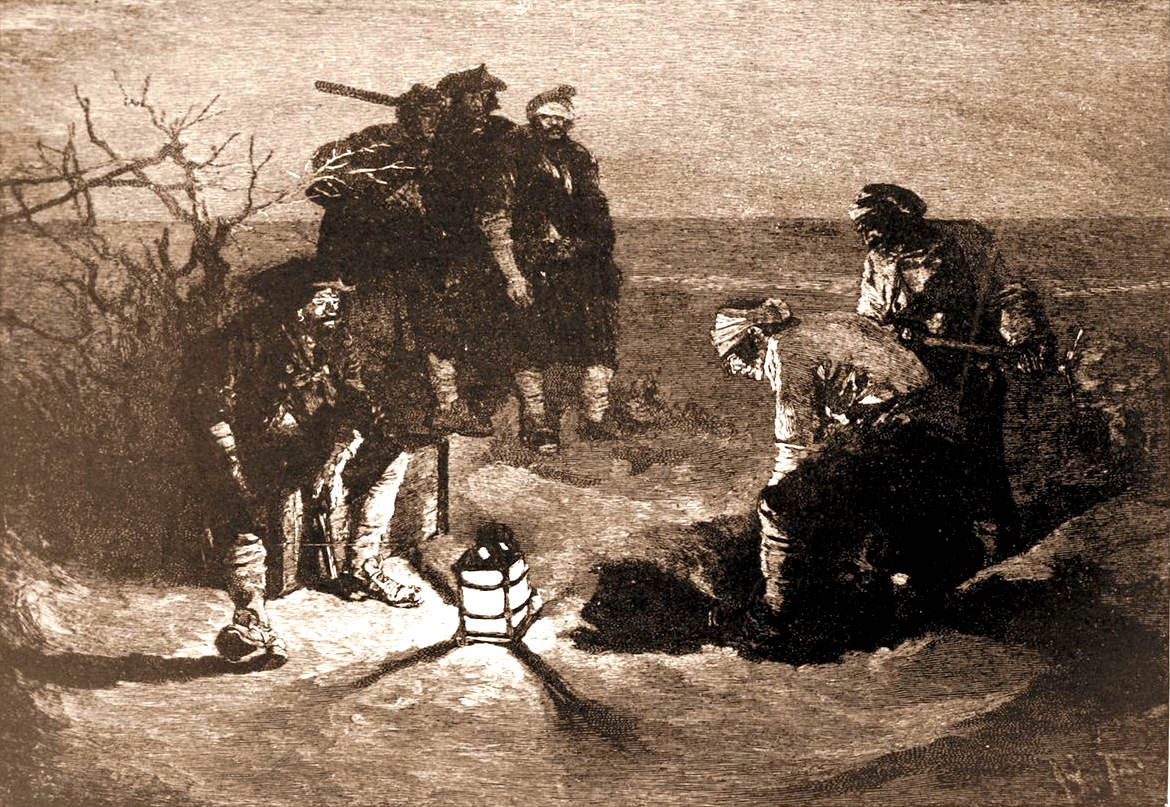
SPANISH PLUNDER
The conquistadors first found gold on the island of Hispaniola (modern Dominican Republic/Haiti) in 1494. The tentacles of the empire then spread to Puerto Rico in 1508, Jamaica in 1509, and Cuba in 1511, so far the best source of gold. In the spring of 1513, Juan Ponce de León (1474-1521) was the first European to make a documented landing in Florida. Also in 1513, Vasco Núñez de Balboa (1475-1519) crossed the Isthmus of Panama and so became the first European to sight the Pacific Ocean. In the 1520s, the Spanish colonialization process went up another gear. Diego Velázquez de Cuéllar (1465-1524), the Governor of Cuba, sent Hernán Cortés (1485-1547) to explore Mexico, where he encountered and then conquered the Aztecs from 1521. Then Pedro de Alvarado (c. 1485-1541) led the brutal conquest of the Maya in Guatemala in 1524. Next came Francisco Pizarro (c. 1478-1541), who plundered Inca Peru from 1532, and then Hernando de Soto (c. 1500-1542), who began exploring North America as far as the Mississippi River in 1539-42. All of these men were after wealth of any kind, from emeralds to exotic hides, but the most coveted material of all was gold.

SKELETON
ISLAND - Sir Henry Morgan
visited this island on many occasions, though his plantations were in
Jamaica, and he lived in Port Royal, where he enjoyed the high life. Today we know the above as Isla
de Providencia, Columbia. The pirates would have to pass by, on their
return from Panama to Jamaica.
AZTEC GOLD
When Cortés began the conquest of Mexico in 1519, the search for gold was foremost in his mind and the primary motivation of his fellow conquistadors. The superior weapons of the conquistadors, their aggressive and total war tactics, and the brilliant use of local allies all conspired to bring the Spanish victory after victory and ultimate control of the last great empire in Mesoamerica's long history.
When Cortés had met the Aztec ruler Motecuhzoma (aka Montezuma, r. 1502-1520) in November 1519, things had started well in the search for gold when the conquistador was presented with a magnificent necklace of golden crabs. With the fall of the Aztec capital Tenochtitlan in August 1521, temples, palaces, storehouses, and private homes were looted for their valuables. Indigenous peoples were frequently captured and tortured to reveal the whereabouts of their valuables and particularly anything at all made of gold. The conquistadors were insatiable in their greed for everything from gold nose plugs to secret idols. As one contemporary native source quotes: "The Spaniards took things from people by force. They were looking for gold; they cared nothing for greenstone, precious feathers, or turquoise" (quoted in Carballo, 226).
For a more regular flow of gold, subjugated tribes were soon obliged to give the Spanish yearly tribute, often in the form of small gold discs. Naturally, the Spaniards also wanted to know where the gold had originally come from, and so the Aztec mines at Taxco and Pachuca were taken over. New gold and silver mines were created at Taxco (1536), Zacatecas (1546), Guanajuato (1550), Pachuca (1552), and San Luis Potosí (1592), and so the steady stream of precious metals kept on flowing back to Spain.
WHO WERE THE AZTECS?
The Aztecs are thought to be a nomadic tribe from northern Mexico who arrived in Mesoamerica around the 13th century.This cultural area now includes Mexico, Belize, Guatemala, El Salvador, Honduras, Nicaragua.The name "Aztecs" is a European invention and they called themselves "Mexica".
They forged a powerful empire from their stunning captial city Tenochtitlan, ruling more than 500 states and up to six million people.The Aztec civilization was highly developed intellectually and artistically - one of the first to mandate education for kids.
The strict social system featured nobles at the top and servants and slaves at the bottom. It even included garbage men.
They were one of the first civilizations to introduce chocolate to Europeans.They had had their own rubber ball game called "Ullamaliztli" which consisted of trying to get the ball through impossibly small hoops without it touching the ground and by only using use your knees, elbows, head, and hips.
In the great cities of the Aztec empire, magnificent temples, palaces, plazas and statues were devoted to their many gods.This sprawling empire came to an end in just a few years when Spanish explorers led by Hernan Cortes and some 400 soldiers arrived in the capital in November 1519.
Despite their inferior numbers, the Spaniards had more powerful weapons and killed thousands of Aztec nobles during a dance ceremony.
After being driven from the capital city, Cortes forged an alliance with Aztec's native rivals and defeated the Aztecs two years later.More than 240,000 people died in the conquest which effectively ended the Aztec civilization.
It is thought around 25 per cent of the empire was lost when smallpox, a European disease, spread rapidly among the Aztecs and they had no idea how to treat it.
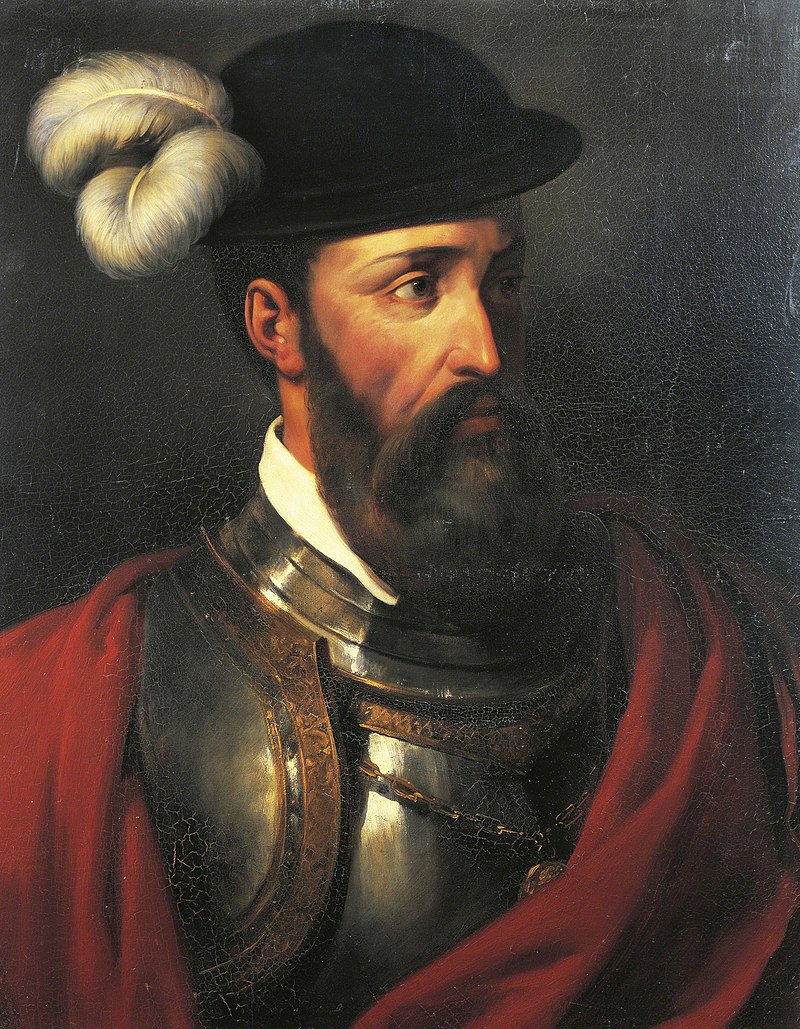
INCA GOLD
In Peru, the conquistador Francisco Pizarro attacked the Inca Empire in 1532 and captured its ruler, Atahualpa. The Inca civilization considered gold the sweat of their sun god Inti, and so it was used to manufacture all manner of objects of religious significance, especially masks and sun disks. The Coricancha Temple of the Sun in Cusco was covered with over 700 half-metre square sheets of beaten gold, each weighing 2 kg (4,4 lbs). There was even a garden dedicated to Inti. Everything in it was made of gold and silver. There was a large field of corn and life-size models of shepherds, llamas, jaguars, guinea pigs, monkeys, birds, and even butterflies and insects, all crafted in precious metal.
The conquistadors were not slow to observe these magnificent adornments to Inca temples. The leader was promised his freedom if a massive ransom was paid, enough to fill a room measuring around 6.2 x 4.8 m (20 x 15.5 ft). Atahualpa's ransom was duly paid and then melted down in nine large forges and distributed out amongst the 217 Spaniards. The gold part of this ransom, with a purity of 22.5 carats and weighing over 6,000 kg (13,420 lbs), was valued as equal to over 1.3 million gold pesos, well over $300 million today. An infantryman received the enormous sum of 20 kilos (44 lbs) of gold, while a cavalryman got 41 kilos (90 lbs); Pizarro gave himself seven times that of a cavalryman, and the Crown was allotted its one-fifth as promised. In addition to this sum, Pizarro was obliged under the terms of his contract of conquest and adelantado status to pay the Crown a 10% tax on all the gold he acquired in Peru, a figure which rose to 20% after the first six years.
The former Inca Empire also became a massive source of silver both from looting and mining. The Incas had long used mines as a way to extract labour and tribute from specific areas. Deposits of gold were mined using narrow shafts that followed veins of the metal. There were also open mines, and gold was recovered by panning river beds. Precious metal mines were opened and exploited by the Spanish across South America for all they were worth. Major mines included the Cauca Valley mines in Colombia (opened in 1540), Potosí (1545) and Oruro (1595) in Bolivia, and the Castrovirreyna (1555) and Cerco de Pasco (1630) mines in Peru.
Silver extraction from the Americas soon came to dominate; by 1540, it made up over 85% of precious metal shipments to Spain. Throughout the 16th century and early 17th century, gold and silver always made up at least 80% of the cargoes sent to Europe in terms of their total value. The labour that extracted the gold and silver was forced in the encomienda license system, which gave its holder the right to use local labour for free in return for offering a nominal degree of security and the opportunity to be educated in the
Christian religion. As diseases and poor working conditions took a severe toll on local populations, the encomienda system was eventually replaced by one of low pay, the repartimiento system.
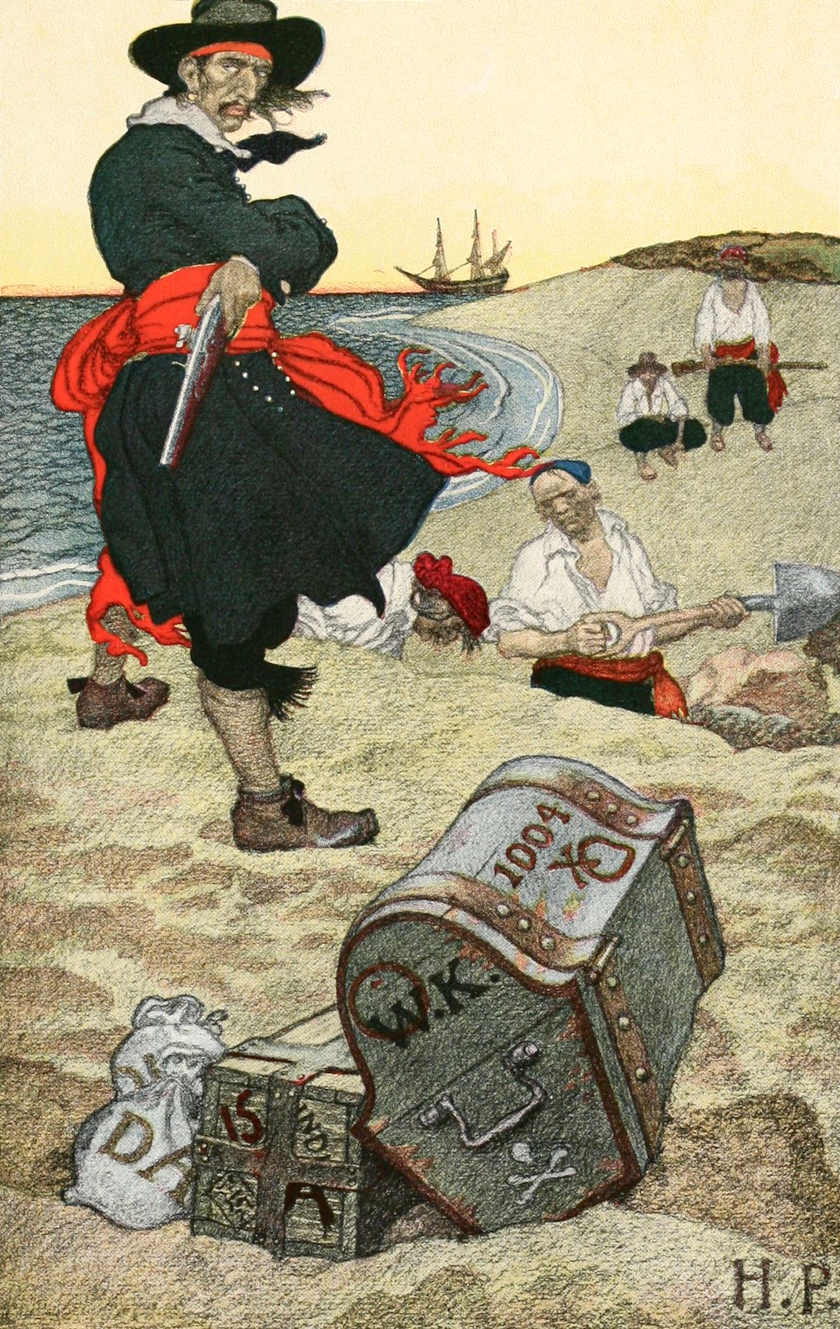
We
are asked to believe that Edward Thatch, was not a successful, or wealthy pirate.
But given his years as a privateer, then pirate, one wonders what happened
to all of the booty he purloined.
Compare Blackbeard’s final estate to Capt. William
Kidd’s £14,000 worth of gold,
silver, and
jewels; or the East Indian pirate Henry Every’s much more impressive £350,000 haul; or Sam Bellamy’s estimated plunder of as much as a million pounds sterling. But that all ranks well below
Sir Francis
Drake’s massive piratical treasure of £1.5 million valued in 1582. Yes, Drake was the greatest pirate of them all.
https://www
|




